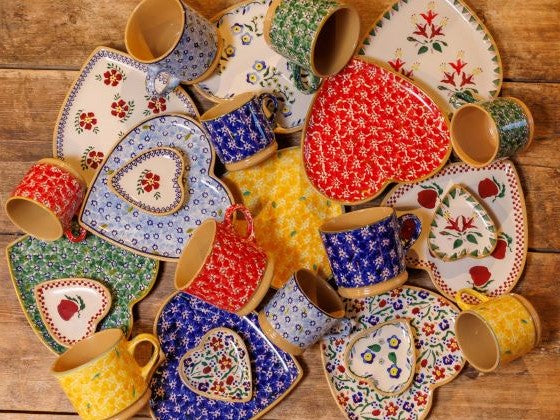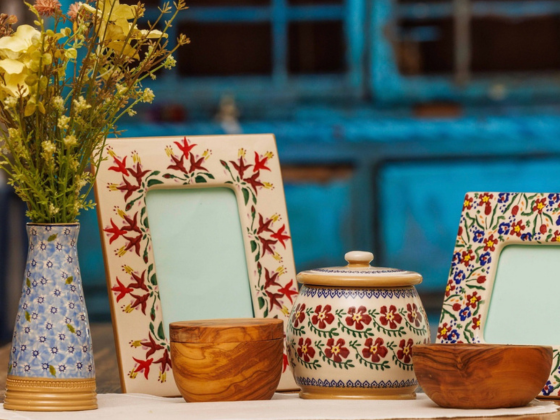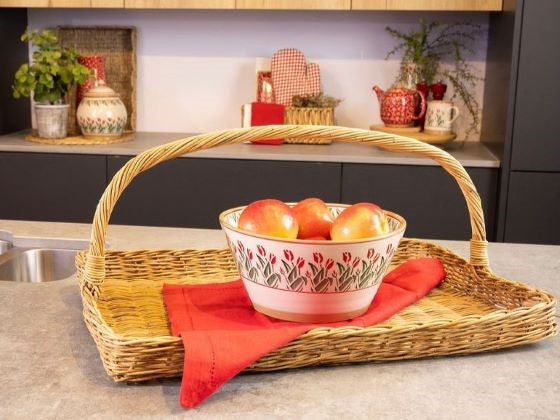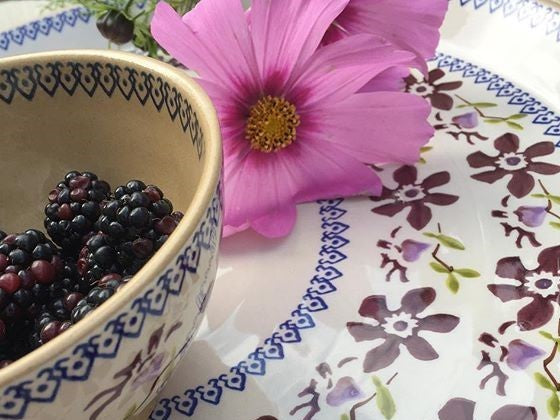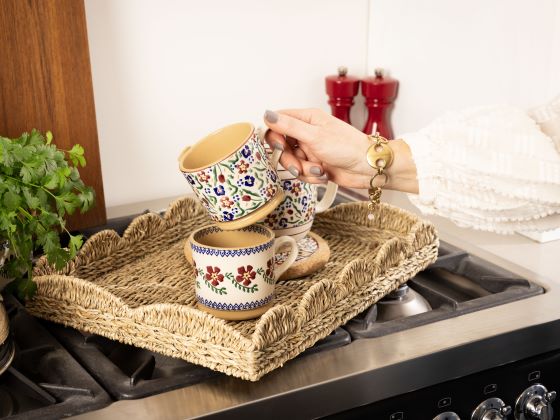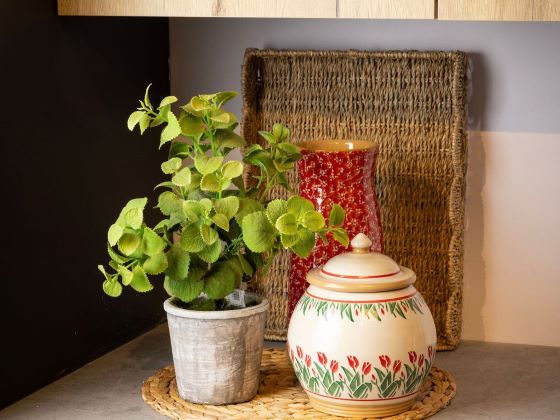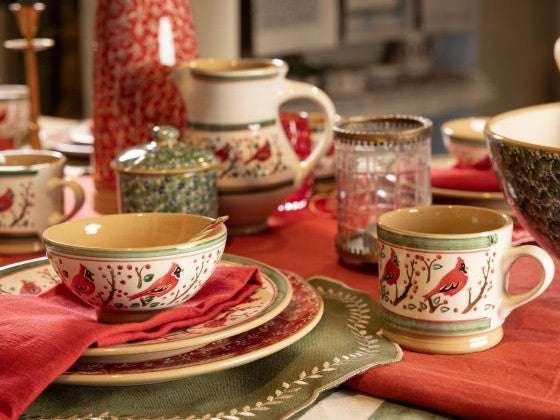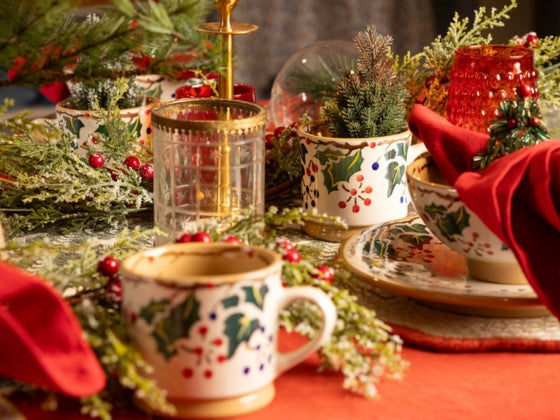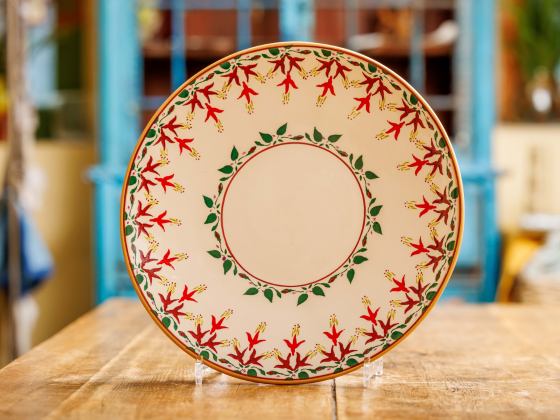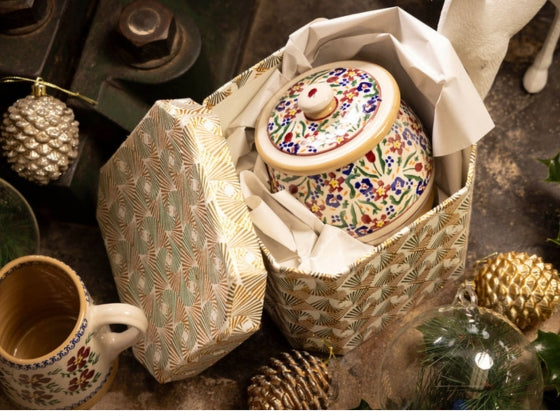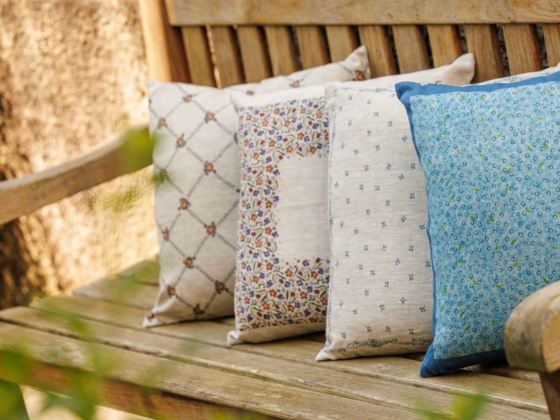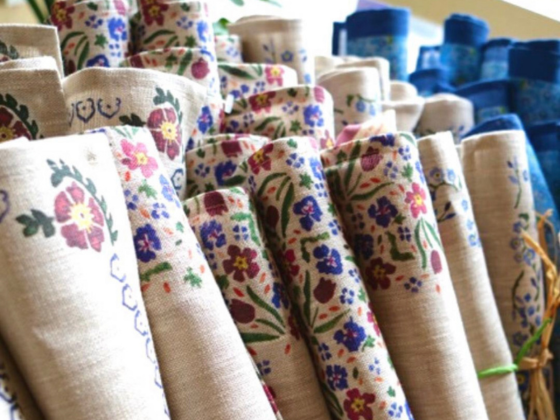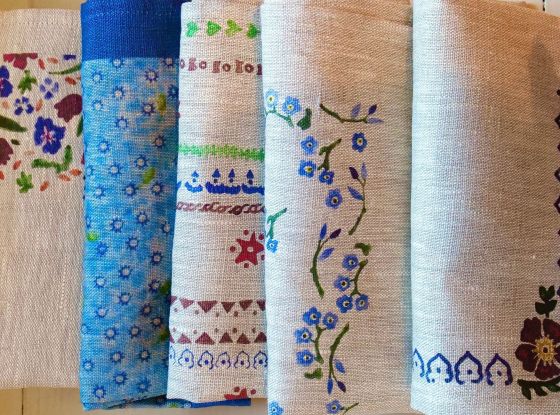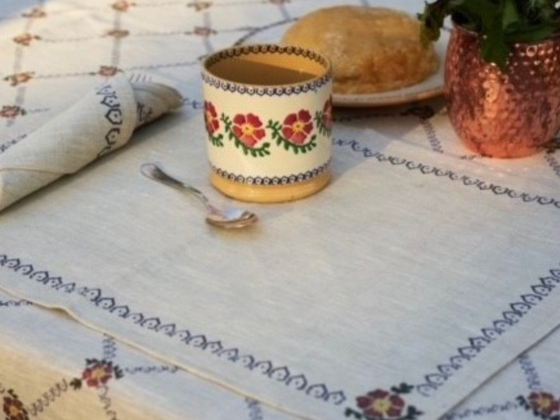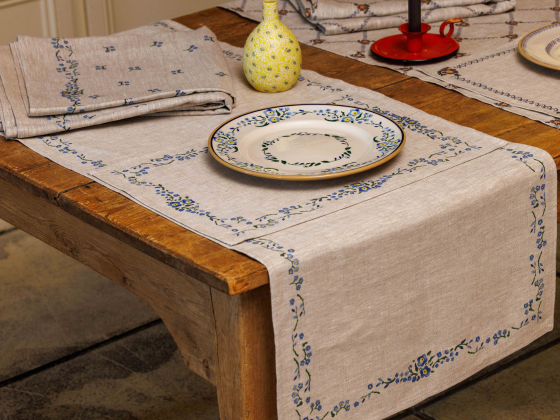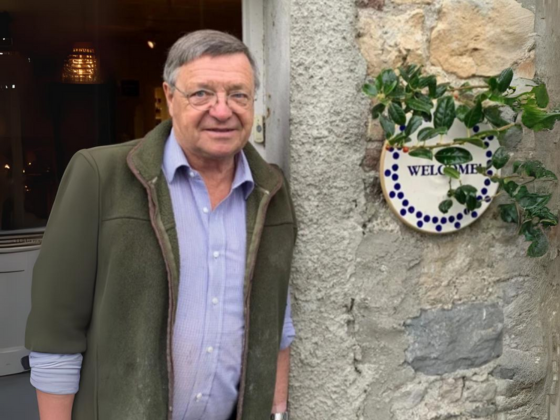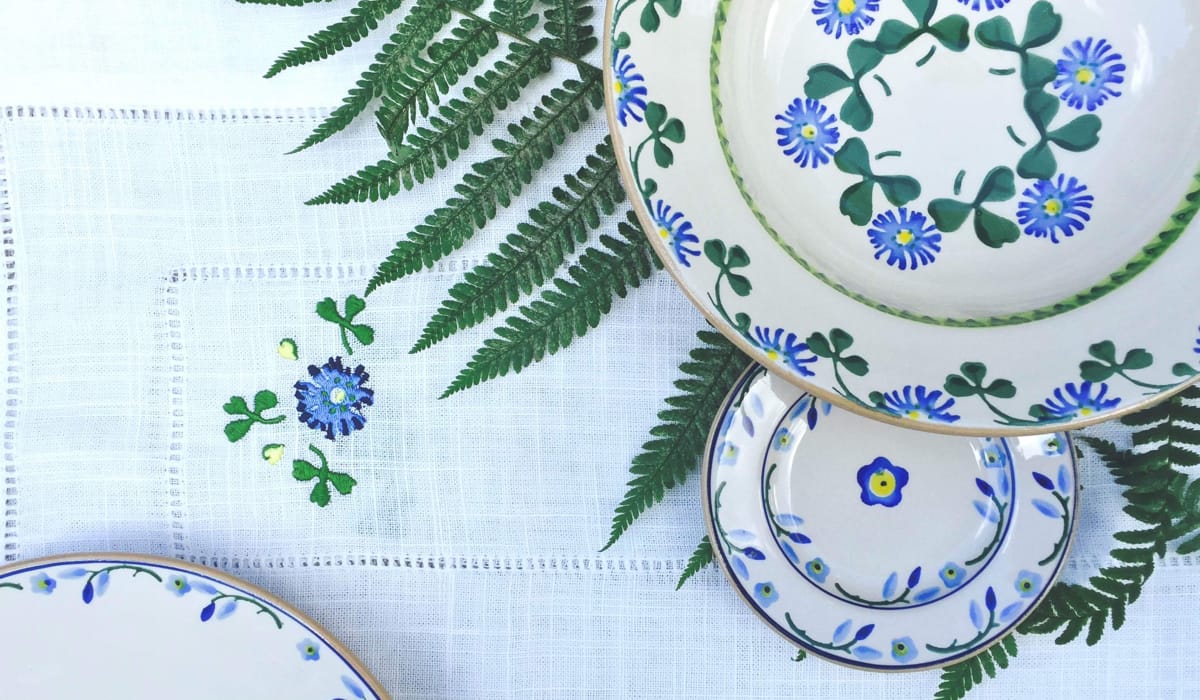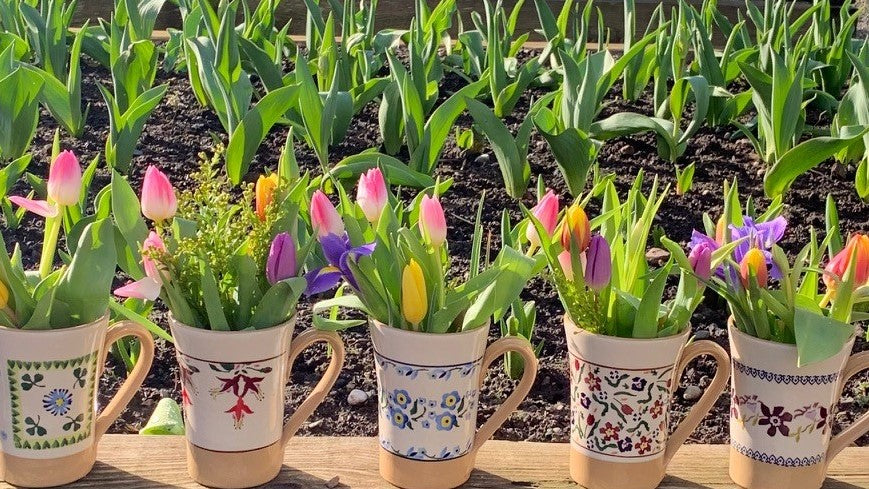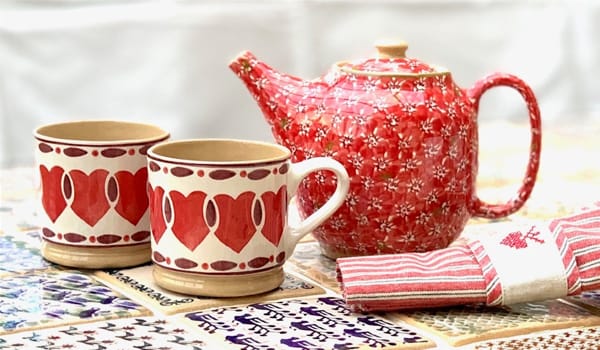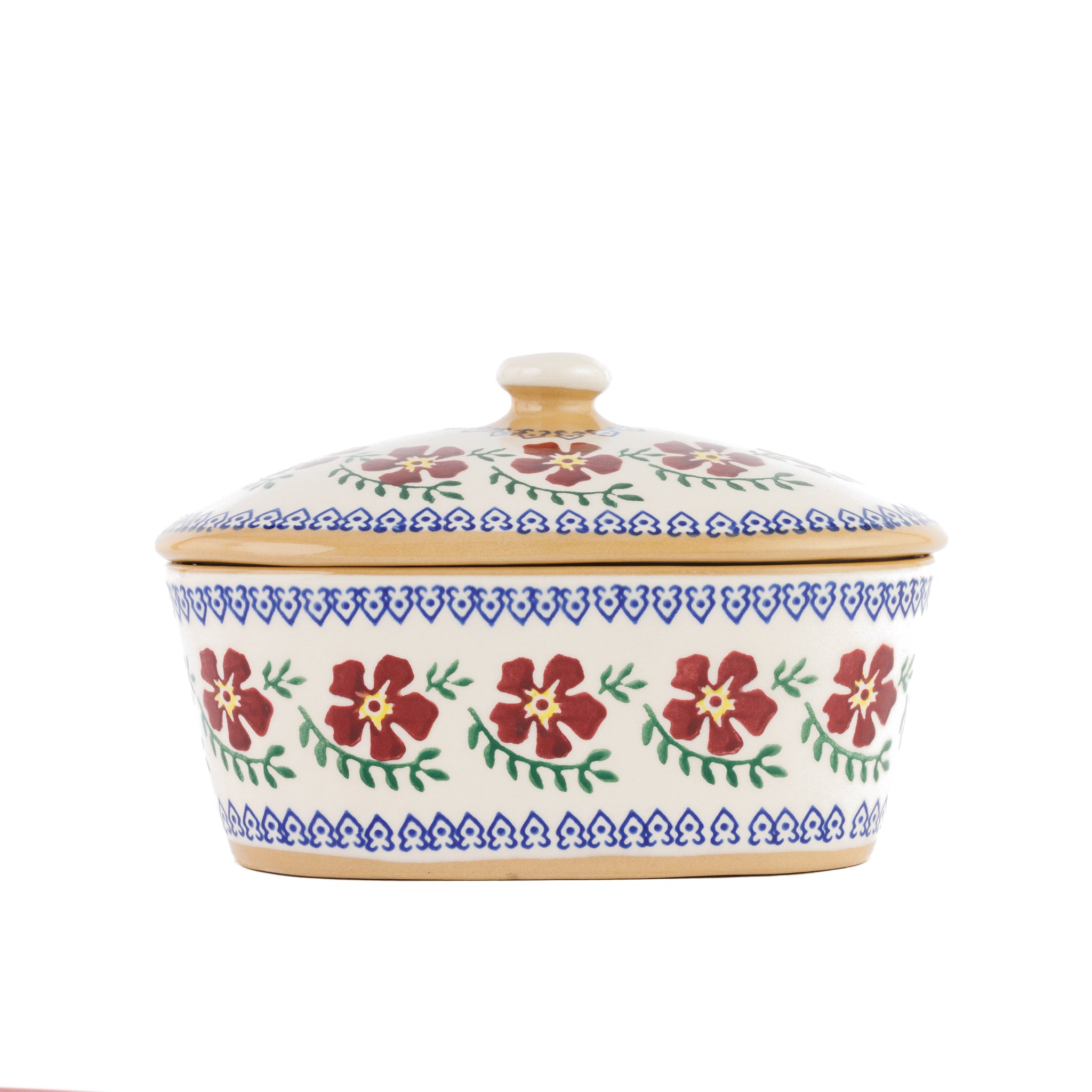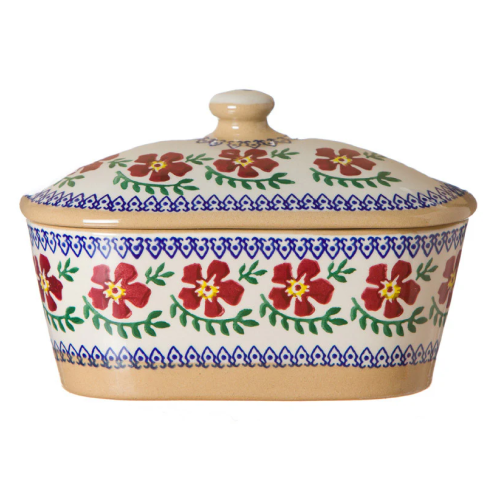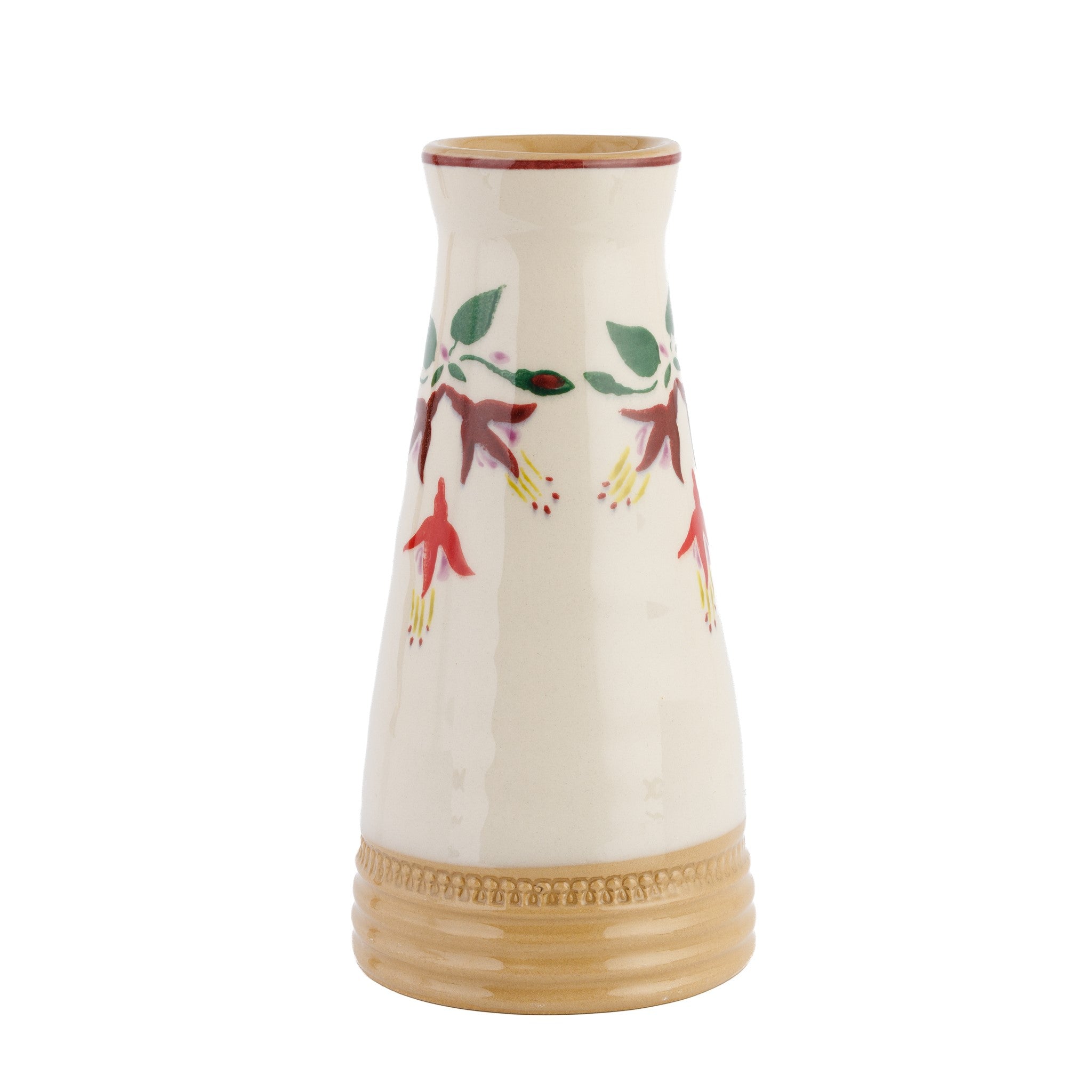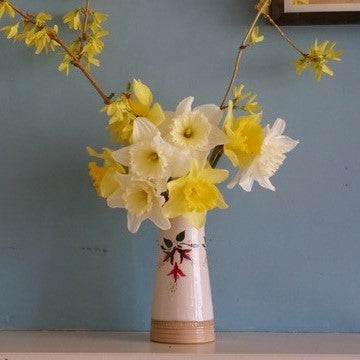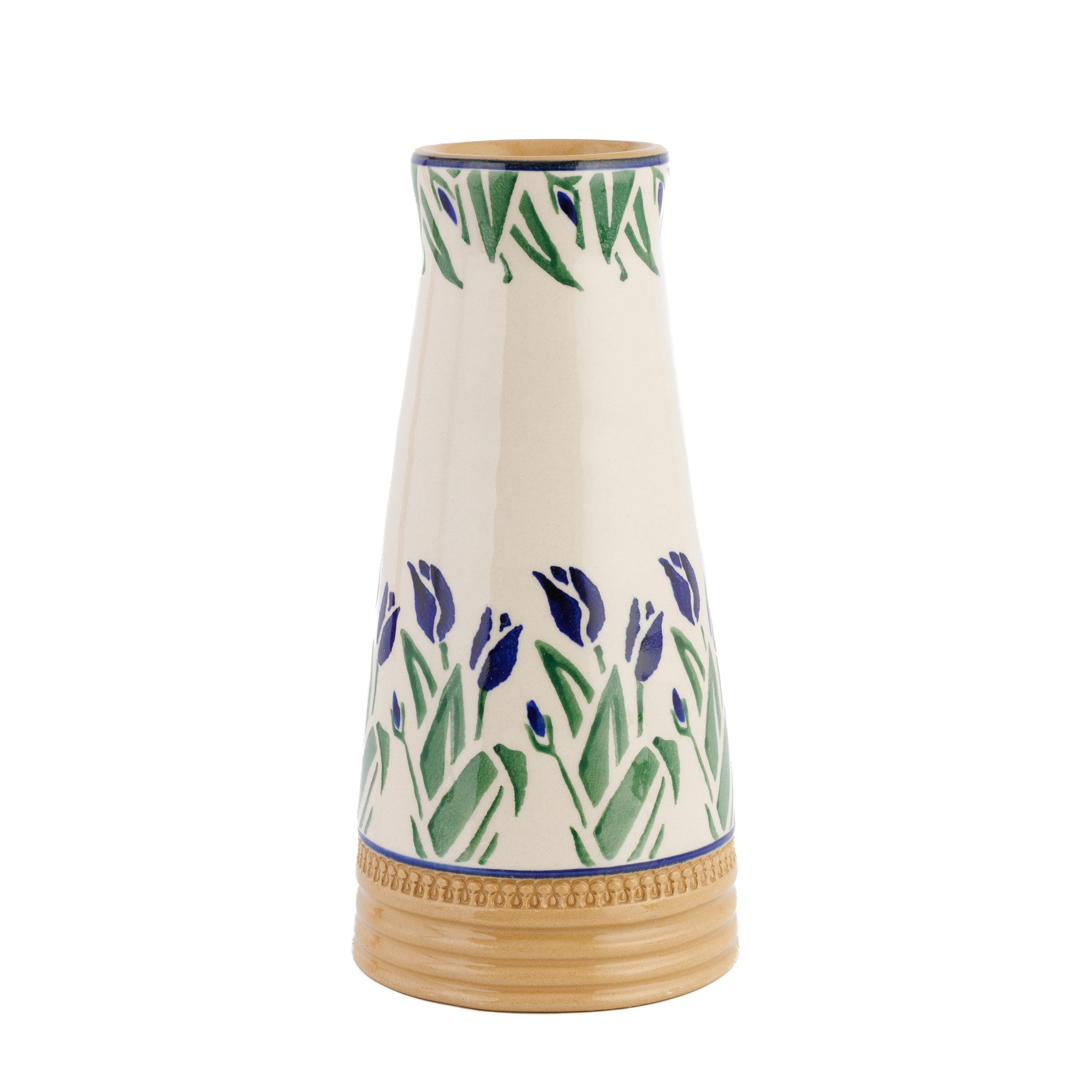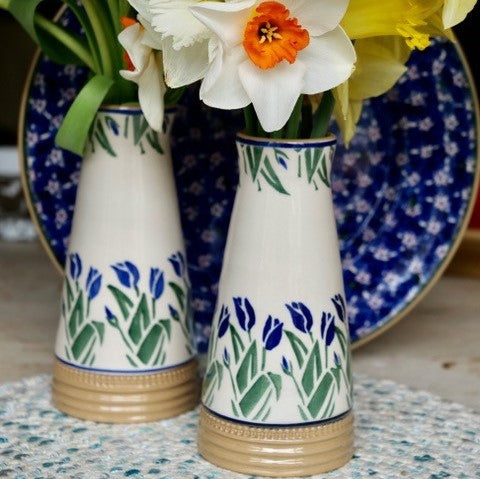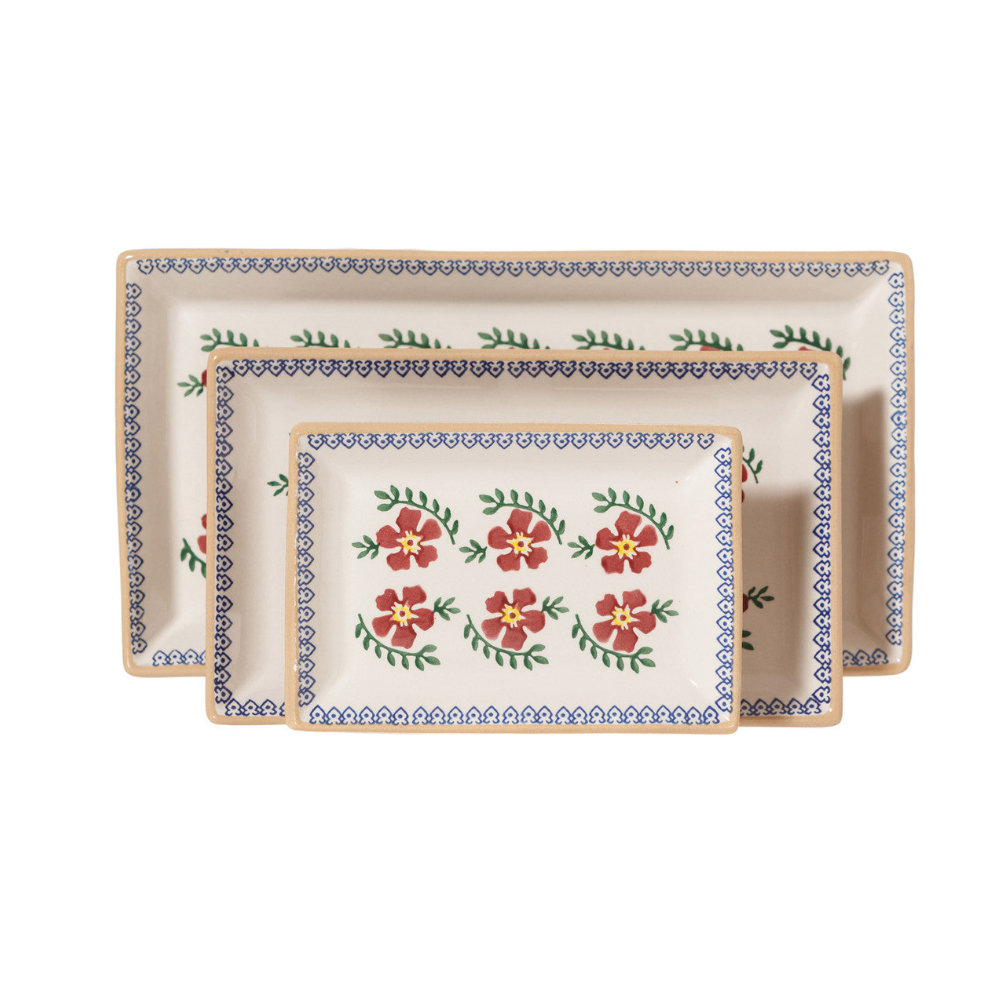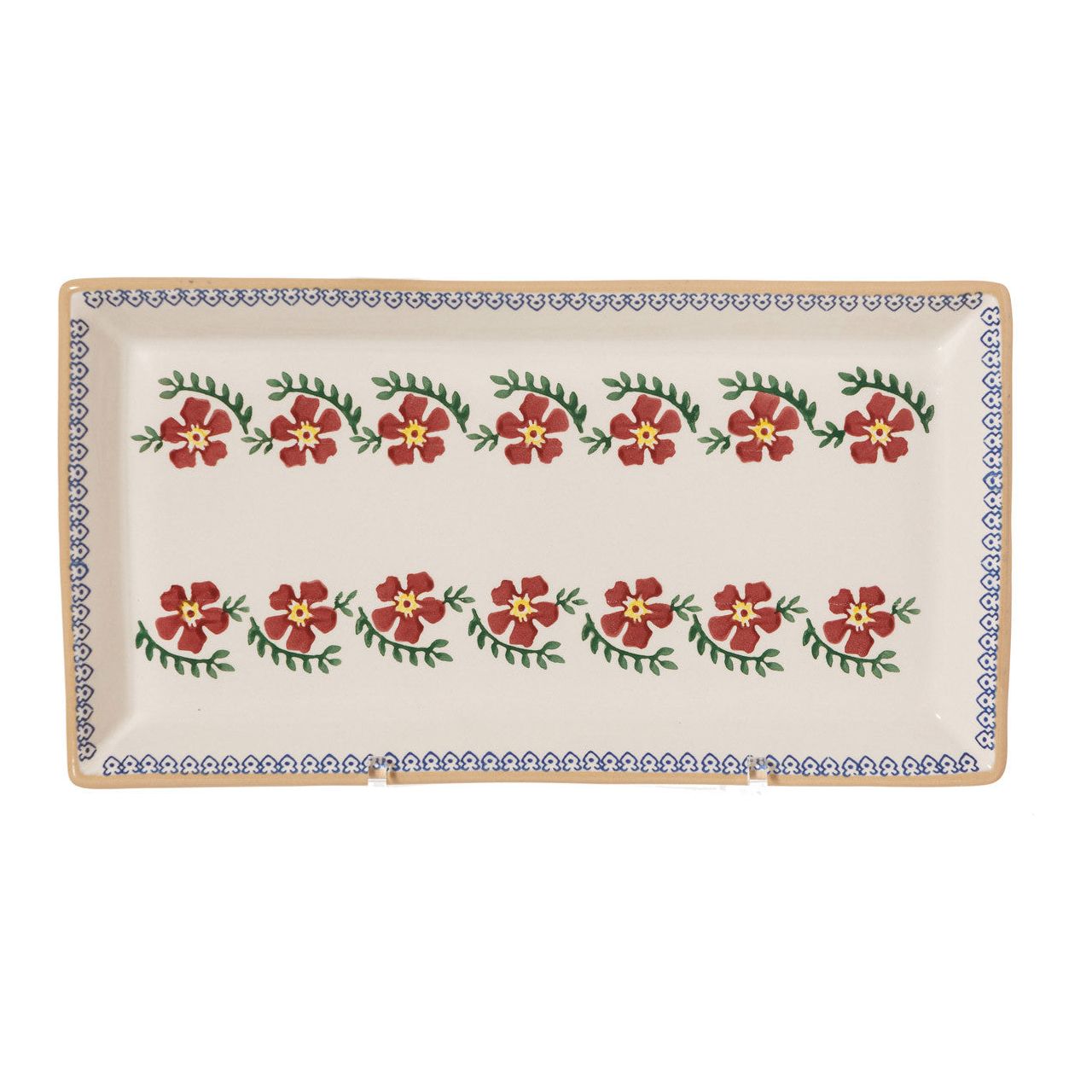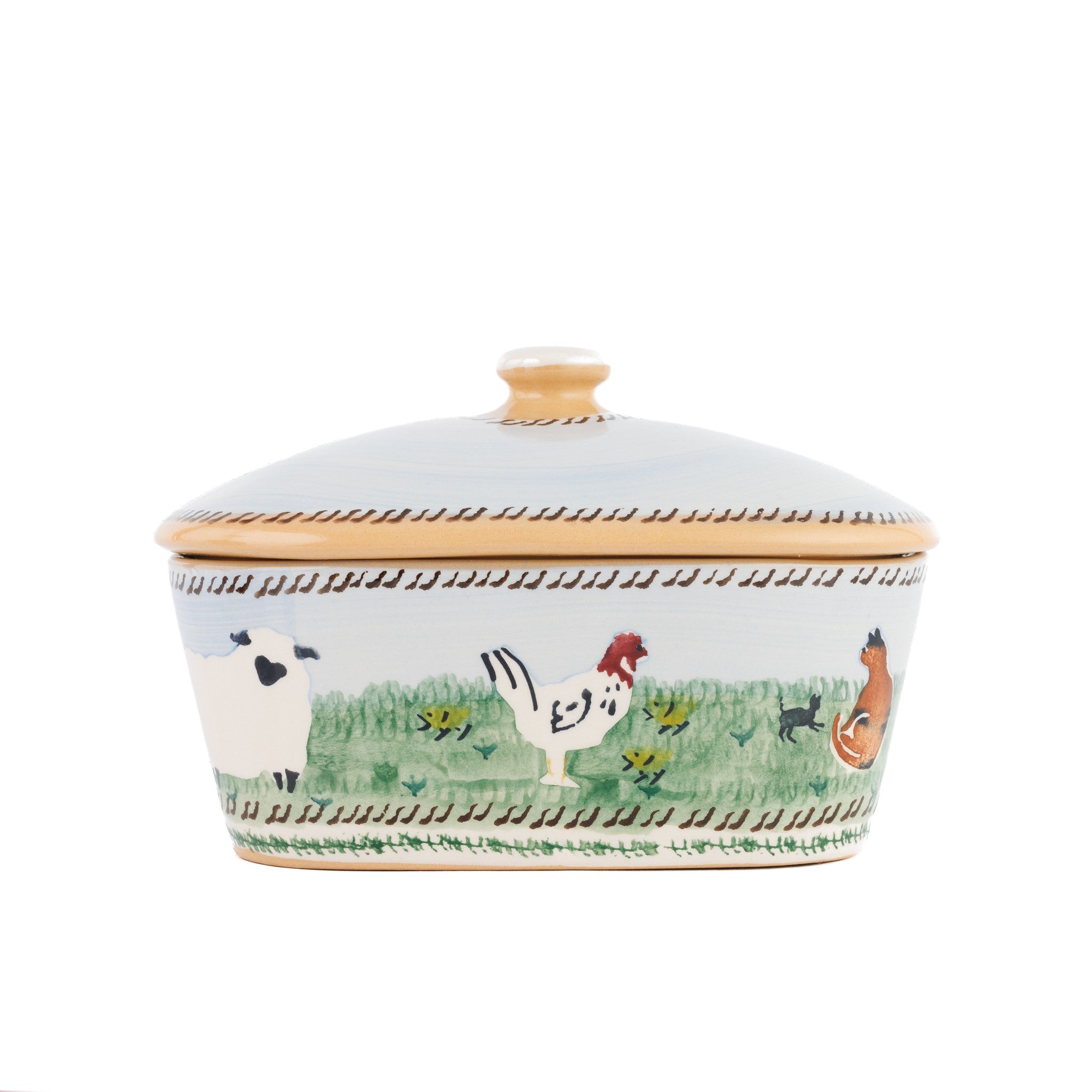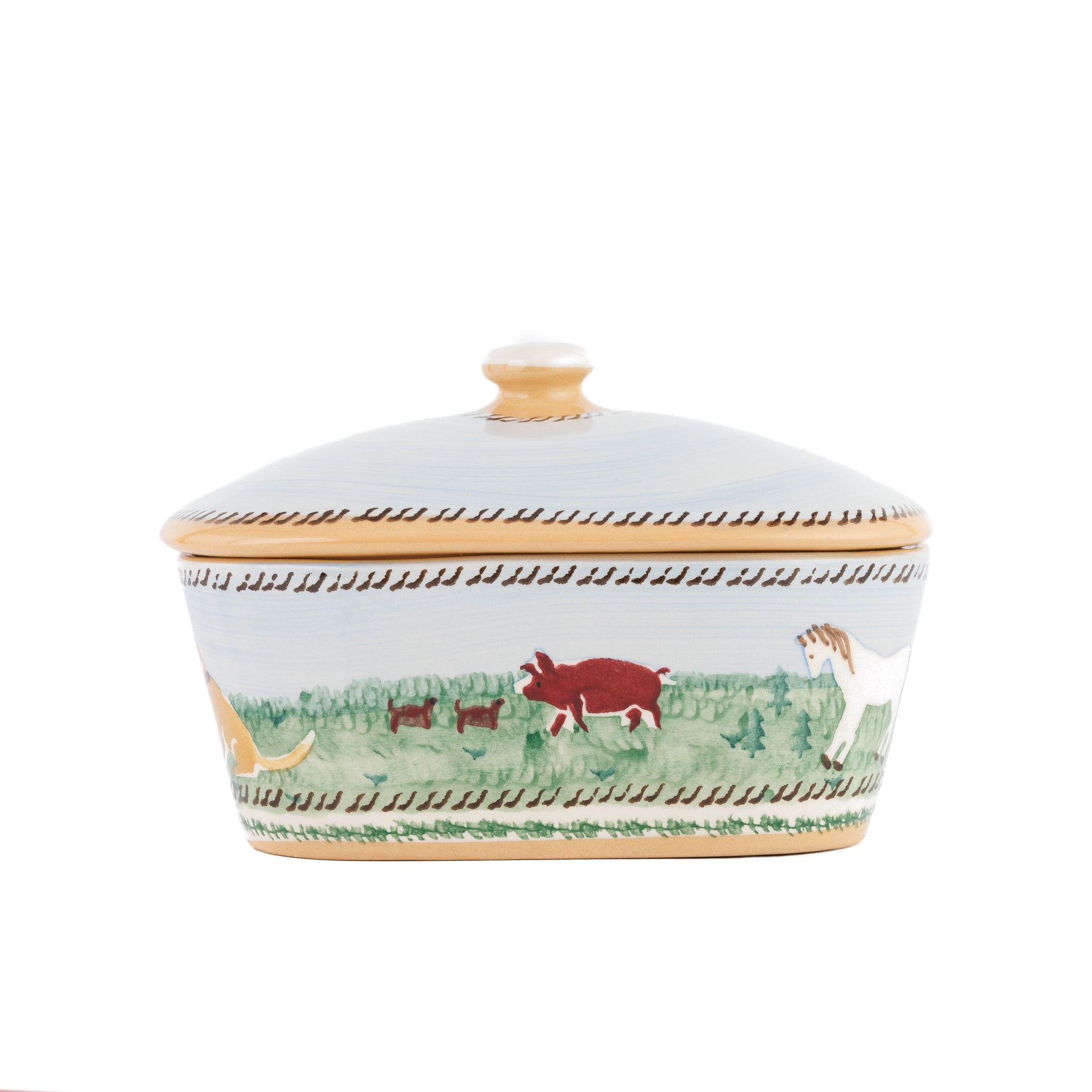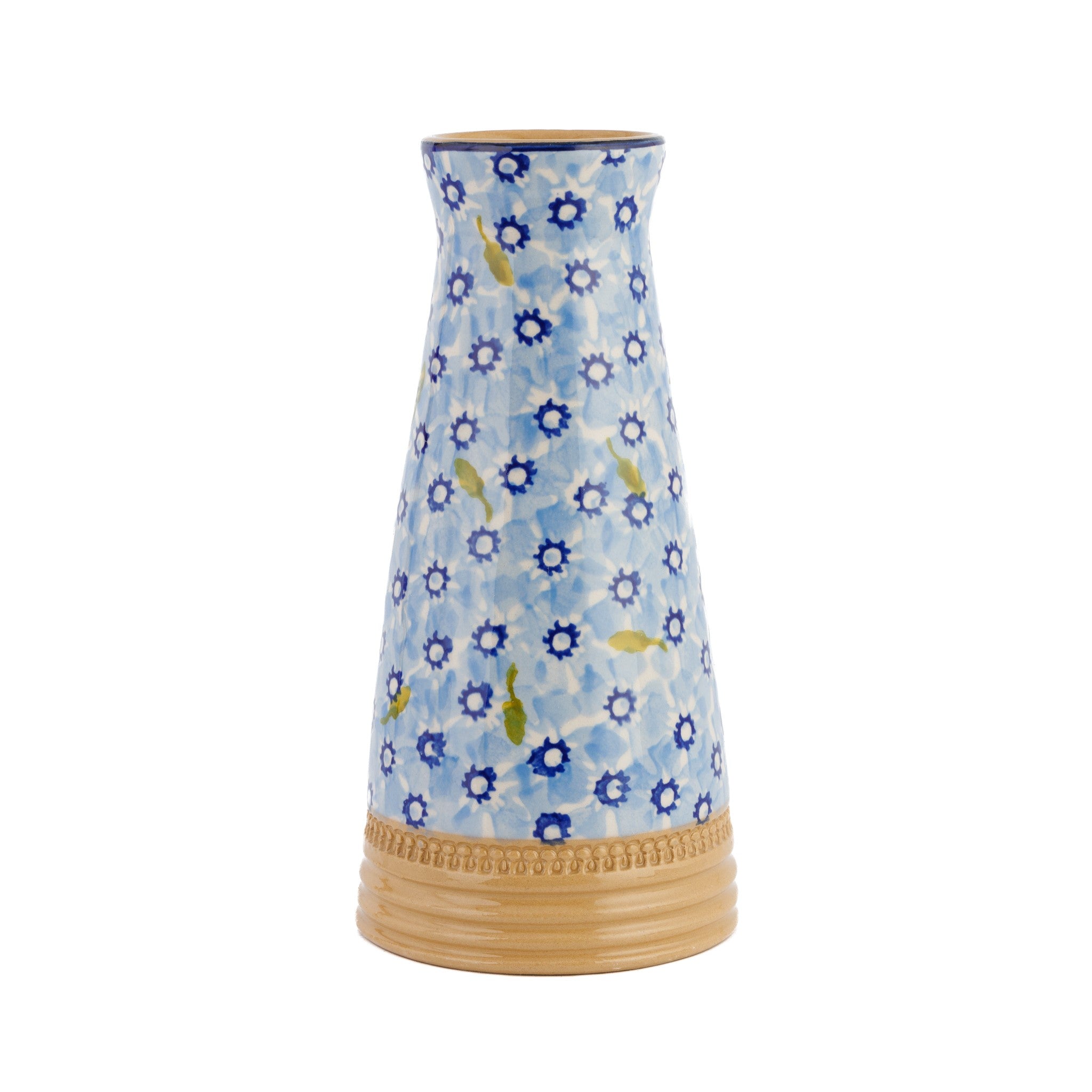I read in a magazine recently that aside from the very bright ‘Living Coral’ – Pantone’s 2019 Colour of the Year, described as “hopeful and optimistic” – various greens also appeared in the list. Emerald was in amongst the “Jewel Toned Accents” and Lime Green within “Electric Tones”. Very handy to know if you like to keep up with these kinds of trends or want to repaint your bathroom! For some of us who are more constant in our devotion to certain colours, colour trends are a slightly odd concept. We find our colours and keep them - they’re part of who we are and how people recognise us.

Testing out mixed greens as I paint
Aside from designing the patterns on Nicholas Mosse Pottery, as a botanical artist I’ve been thinking about the colour green for years. It’s a continuous challenge finding the right green for the plant I’m painting. Green is full of infinite possibility, filling in the spectrum between blue and yellow. In actual physical pigments, there are numerous yellows and loads of blues, so it's which yellow and which blue you mix that will determine the green you end up with and whether it’s right or not. Apple, sage, wormwood, asparagus, shamrock, lime, olive, acorn, celery, mint, bamboo, holly - each present as a very particular kind of green. My much-loved favourite is ‘Sap Green’, as I’ve found it closest to most of the leaves and stems I work on.
Like ‘Living Coral’ green is also a “hopeful colour” through its association with nature, new life and spring. And with just that little bit of warmth in the air the garden is daring to sprout new growth, all of which is a vital, fresh green compared with the richer, deeper tones of past years’ foliage. Just one shrub can have such variety of greens. It makes this time of year so wonderful even before all the colourful spring flowers start to bloom.

Forget-Me-Not and Lawn Plates and a Lawn Large Mug. The different tones on our Lawn pattern are made by layers of over-lapping blossoms to create different green tones. At this time of year I also enjoy the slant of light at certain times of day cuts across and through leaves, illuminating them and throwing the veins and structure into silhouette.
Green dyes and pigments have been traditionally made from all sorts of natural sources - fern, buckthorn berries, the juice of nettles, leeks, foxgloves, gorse and the leaves of ash and birch/alder. I could read through a list of colours of plants forever, they read like a poem. The earth itself can also give us ‘Terre Verte’, or ‘Green Earth’ – a pigment close to our hearts at the pottery as it was originally derived from clay. It was found in certain counties in Europe – Italy, Poland, France – and the clay was washed and then powdered. This tone was often used in medieval painting as an underlayer for faces, to compliment the flesh tones painted over it. Another green, a grey-green that I’m also fond of is ‘Verdigris’ – familiar to us in this wonderful yet damp country on many a bronze statue that has weathered a bit of wind and rain. Other metals, like copper (think of the Statue of Liberty) and brass will also turn this quite bright grey-green over time. At least appealing colour comes out of so much the dampness!
If the climate change forecasters are right though Ireland may not be as wet in years to come and may struggle to keep hold of its ‘emerald’ reputation. At Nicholas Mosse Pottery we have always strived to BE as ‘green’ as we can and to reduce our impact on the environment. Heating our kilns to the high temperatures needed to fire our wares requires considerable energy. We set the Old Mill’s wheels turning again in the 80s to generate hydro-electricity from the River Nore so as to make this process as sustainable as possible. All the heat that is produced and the water used on site is recirculated/recycled. We try to do our bit for this precious planet.

We’re potters not campaigners, but if you want to do something, however small, you can take part in Earth Hour on 30th March. And turn off your electric lights and appliances for (only!) an hour between 8.30pm and 9.30pm in a show of support for a healthier future for our planet. It’s a pretty small gesture, but cumulative individual actions can have an impact, like all those layers of colour.

Larry Kinsella from Moth to a Flame. He makes a variety of different shapes and sizes - pillar, household and arty candles, like this one on the right, which has lots of texture to let the light glow through with varying intensity.
If/when you do turn of your lights you’ll need candles! In an attempt to both celebrate our glorious country for St Patrick’s Day and to salute our planet we have commissioned our friend and local candle-maker Larry Kinsella from Moth to a Flame to produce a limited edition special green household candle to fit our Reversible Candlesticks.

On 30th March you can turn off your lights for an hour for Earth Hour
Like our pottery, hand-making candles is a process with many meticulous stages. Colour plays an absolutely vital role too. Larry has been hand-making candles in his workshop along the river from us in Bennettsbridge for years. In fact, it’s his 20 year anniversary this year. As well as making green candles for us, we hope he’s also making himself twenty birthday candles.
Susan Mosse

